Females Still Account For Around 70% Of All Trafficked Persons
By a Biometrica staffer
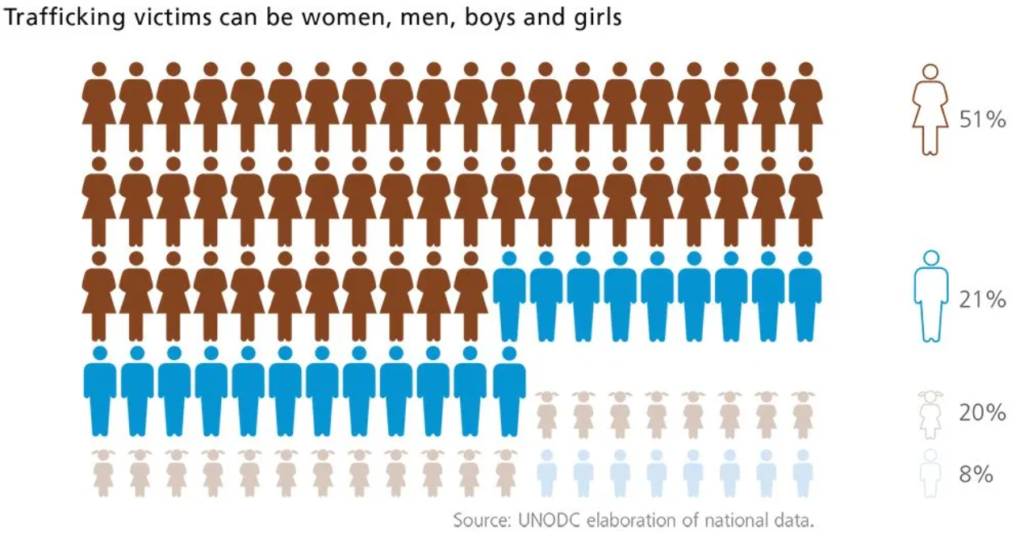
One hundred and nineteen. That’s the number of countries across the world that have never had a female leader. Women serve as heads of State or Government in just 21 countries, according to a report by the UN Secretary-General published in December 2020. At the current rate, parity at the pinnacle of power will not be reached for another 130 years, the report goes on to add. One of the several reasons why women aren’t able to achieve leadership parity across the world is violence and harassment.
As more women have gained access to power, violence and harassment against women in public life has seemingly increased, the UN report goes on to say. Over 80% of women parliamentarians interviewed in 2016 had experienced on-the-job psychological violence; one-third had experienced economic violence; a quarter had experienced physical violence; and one-fifth had experienced sexual violence, according to a 2016 report by the Inter-Parliamentary Union.
Transforming the balance of power is essential for promoting and protecting women’s human rights and solving the urgent challenges of the current age … the UN report concludes. There are several areas where women’s rights movements around the world need urgent attention. Today, on International Women’s Day, we focus on one critical aspect – trafficking of women and girls.
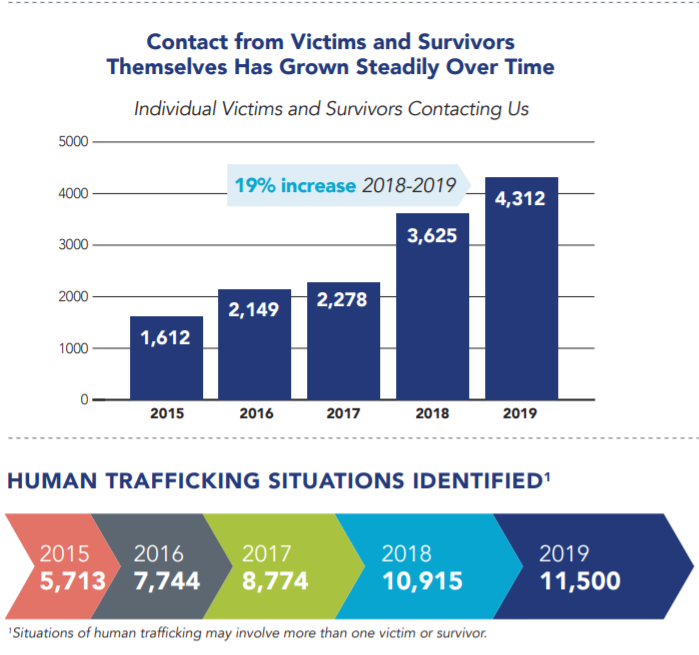
But first, how does law enforcement define human trafficking? The U.S. Department of State website says: “Human trafficking is a crime involving the exploitation of someone for the purposes of compelled labor or a commercial sex act through the use of force, fraud, or coercion. Where a person younger than 18 is induced to perform a commercial sex act, it is a crime regardless of whether there is any force, fraud, or coercion. Victims can be anyone from around the world or right next door: women and men, adults and children, citizens and noncitizens alike.”
There were 11,500 situations of human trafficking identified through the U.S. National Human Trafficking Hotline in 2019. Of those, there was a near-20% increase in victims and survivors contacting the hotline directly, the 2019 report says. That jump is important because victims and survivors of sex and labor trafficking know their situations
and needs better than anyone.
The report goes on to describe one such call to the hotline by a victim, whose name has been changed and details removed in order to protect her identity: “Vanessa* told the Advocate on the U.S. National Human Trafficking Hotline that she had finally decided it was time to get out. She and several other women were being held in a home and forced to engage in prostitution. If they refused or fought, their trafficker withheld food and water and threatened them with a firearm. Their trafficker had cameras placed throughout the house and monitored them at all times. At the time of her call to the Trafficking Hotline, Vanessa was with a buyer and requested that law enforcement be sent to remove her and the other victims from their situation. The Trafficking Hotline was able to report to trusted contacts who acted quickly and extracted Vanessa and the other women. In the course of their investigation, the Trafficking Hotline’s law enforcement partners determined that Vanessa’s situation was actually part of a larger network based in another city and state.”
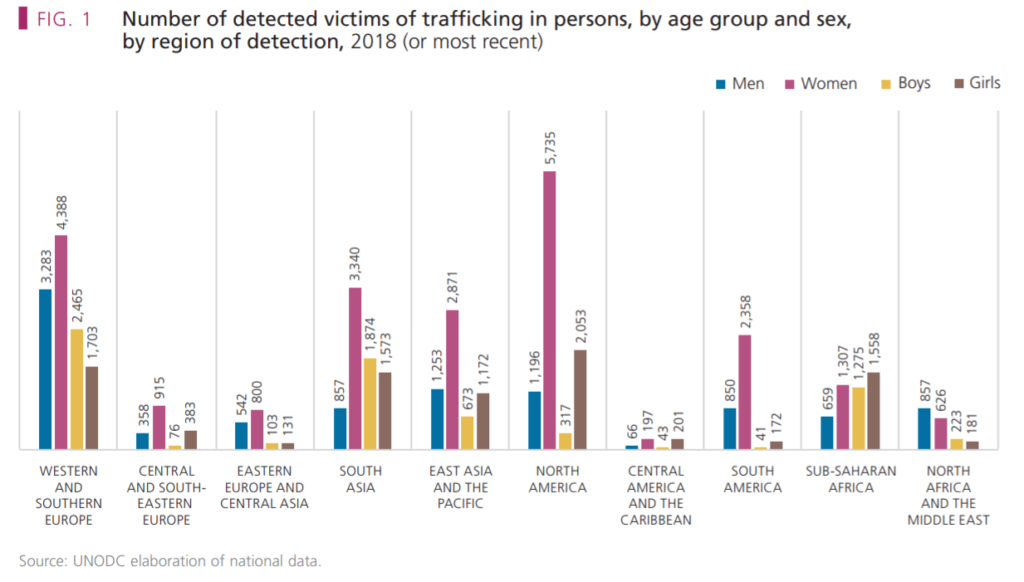
In 2018, for every 10 victims detected globally, about five were adult women and two were girls, the Global Report On Trafficking In Persons 2020 (GLOTiP) says. Trafficked women and girls have to deal with high rates of physical and sexual violence, including homicide and torture, psychological abuse, horrific work and living conditions, and extreme deprivation while in transit, according to the American Psychological Association (APA).
“Variables that contribute to a person’s vulnerability to being trafficked include: membership in a marginalized group; prior victimization and trauma; disabilities; immigrant or refugee status; and family disruption. These may be magnified by globalization, poverty, political instability and war,” the APA adds. Trafficking can lead to serious mental health problems, including anxiety, depression, self-injurious behavior, suicidal ideation and suicide, drug and alcohol addiction, post-traumatic stress disorder (PTSD), dissociative disorders and complex PTSD.
Traffickers target victims who are marginalized or in difficult circumstances. Undocumented migrants and people who are in desperate need of employment are also vulnerable, particularly to trafficking for forced labor.
In Central America and the Caribbean, most of the detected victims in 2018 were girls and women, making up 79% of the total detected trafficking victims in that sub-region, based on the GLOTiP report and its classification. The share of girls as a proportion of the total detected victims remains among the largest percentage of girl victims of trafficking recorded worldwide. In North America, females continue to account for an even larger share of detected victims than in Central America and the Caribbean.
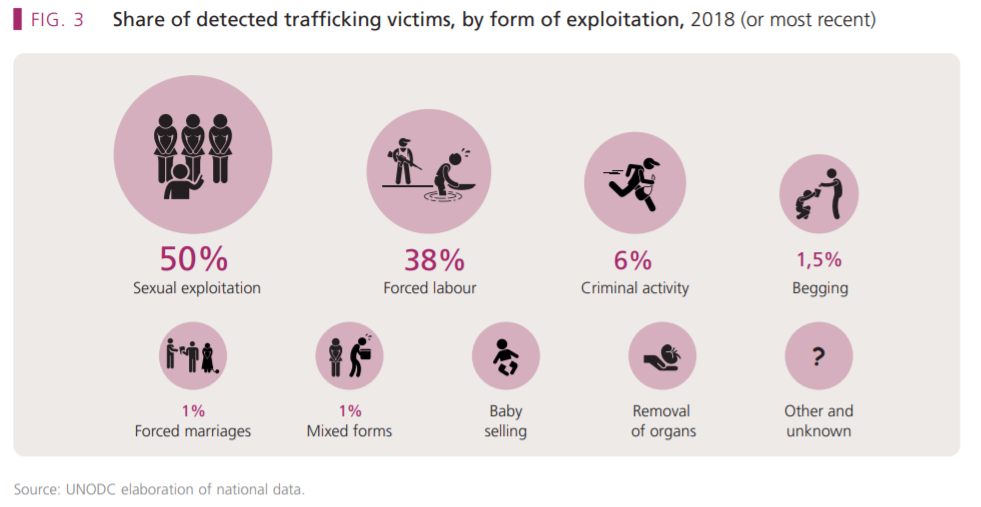
Sexual exploitation is the most commonly detected form of trafficking, (at over 70%) and among the highest recorded globally, in the North America, Central America and the Caribbean, the GLOTiP report says.
At a global level, in 2018, most women detected were trafficked for sexual exploitation, whereas the men detected were mainly trafficked for forced labor. However, a significant share of detected men were trafficked for sexual exploitation or for other forms of exploitation. Similarly, roughly 14% of women were trafficked for forced labor.
Victims of trafficking for domestic servitude are exposed to multiple forms of exploitation and violence, including sexual, physical, and psychological abuse that is rarely seen in other forms of trafficking, analysis of court case summaries and literature suggests. Victims of this type of trafficking are usually women.
Covid-19 Pandemic Has Made Things Worse For Female Trafficking Victims
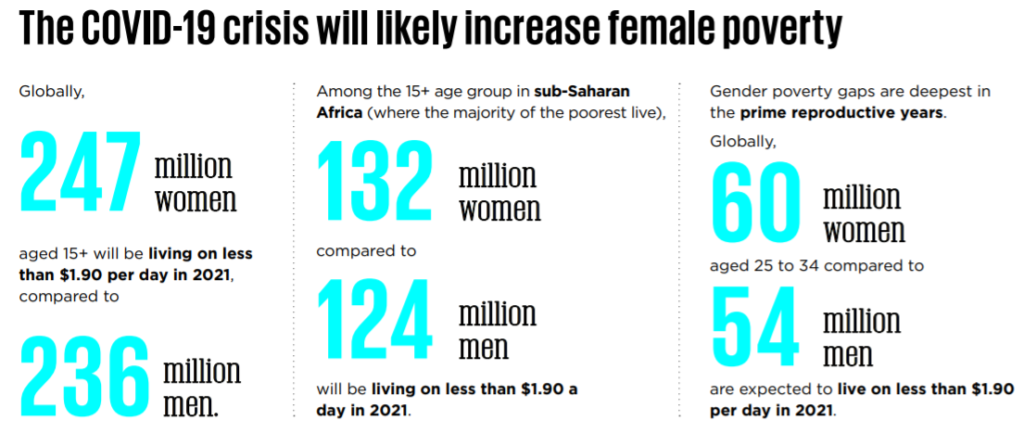
The covid-19 pandemic has not helped the situation for women around the world. To begin with, the crisis is likely to increase female poverty, a UN Women report says. Why does that matter for human trafficking? Of the several pre-existing factors traffickers take advantage of, economic need accounted for 51% of cases, according to the United Nations Office on Drugs and Crime’s collection of court case summaries, published in the GLOTiP report.
“As with previous economic crises, the sharp increase in unemployment rates brought about by the COVID-19 pandemic is likely to increase trafficking in persons, particularly from countries experiencing the fastest and most persistent drops in employment. Job seekers from these countries are likely to be more willing to take high risks in the hope of improving their opportunities. The most vulnerable groups, even in wealthy nations, are those suffering the most during the Pandemic Recession. Evidence suggests low earners have been hit the hardest by spiking unemployment. As unemployment rates rise, increasing numbers are likely to be trafficked from the poorest communities to those parts of the world recovering faster,” the GLOTiP report says.
Although, through the pandemic, quite a few global leaders of nations who were women have received widespread public applaud for handling the Covid-19 pandemic in an efficient, effective and empathetic way – a fact that the UN-Secretary General alluded to in his report from December.
The quality, relevance and effectiveness of policymaking and policy implementation increases when power is shared, as recently shown by the critical roles that women have played in responses to the coronavirus disease (COVID-19) pandemic. Women’s organizations are at the forefront of community responses in many countries but struggle because of diminishing funding, increased demands for services, restricted movement and shrinking civic space. The pandemic is rolling back the limited progress made in the past 25 years with regard to women’s empowerment and gender equality, and measures to increase women’s leadership in COVID-19 response and recovery efforts are urgently needed.
Report of the UN-Secretary General |
Follow-up to the Fourth World Conference on Women and to the
twenty-third special session of the General Assembly
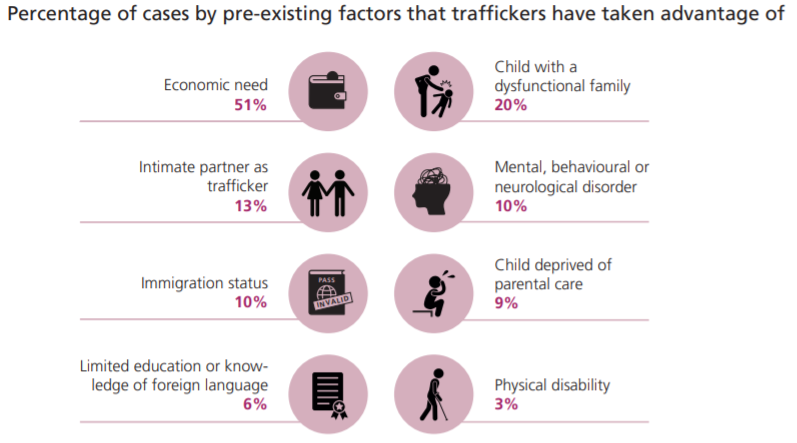
— IN AN EMERGENCY, PLEASE CALL 911 —
Call the National Human Trafficking Hotline at 1-888-373-7888 to:
GET HELP and connect with a service provider in your area;
REPORT A TIP with information on potential human trafficking activity; or
LEARN MORE by requesting training, technical assistance, or resources.
The National Human Trafficking Hotline is a national, toll-free hotline available to answer calls from anywhere in the country, 24 hours a day, 7 days a week, every day of the year. The Hotline is not a law enforcement or immigration authority and is operated by a nongovernmental organization funded by the Federal government.